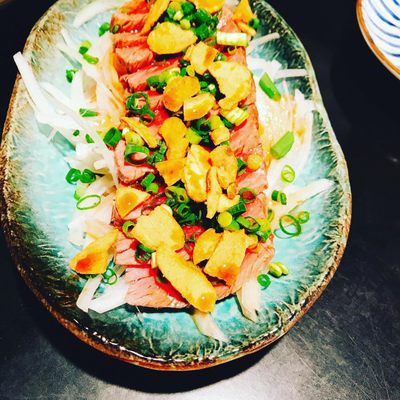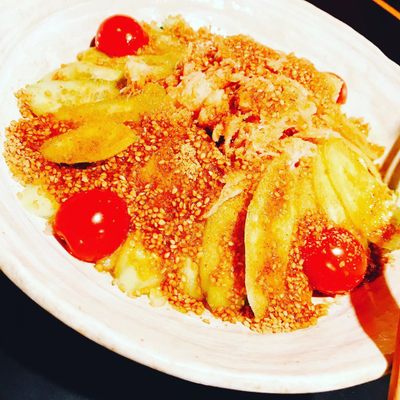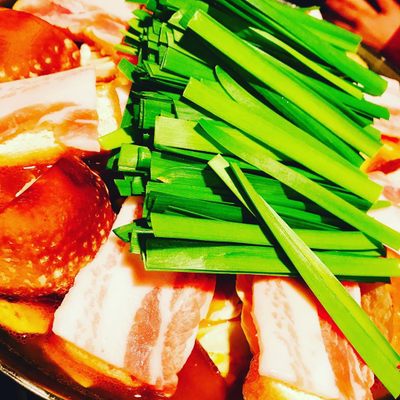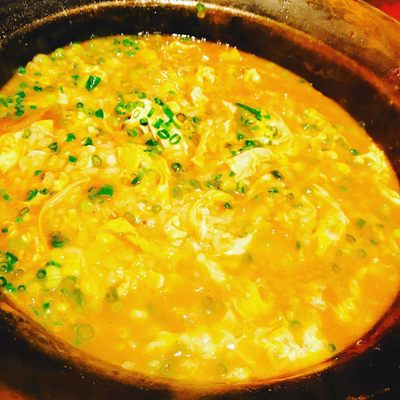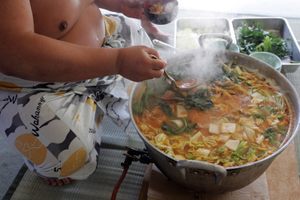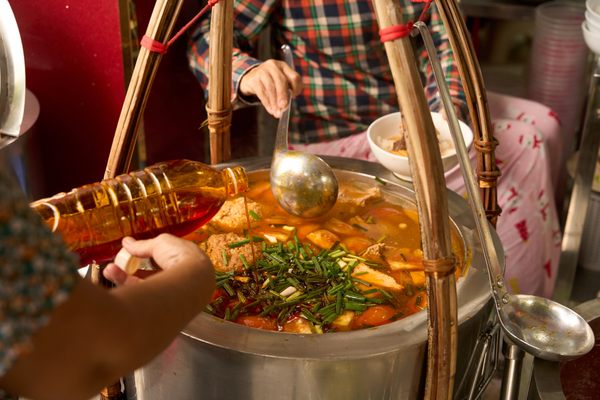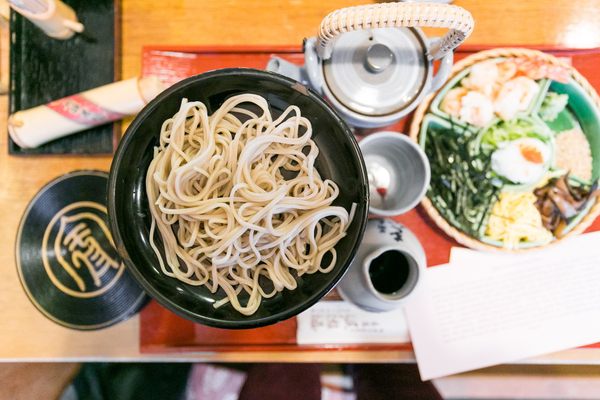About
Lovers of Japanese soup may be familiar with shabu shabu, a dish made of thinly sliced meat and other goodies boiled over an on-table burner. Less familiar outside of Japan, though equally delicious, is chanko nabe, a stew that combines meat or fish with tofu, vegetables, glutinous rice, and broth (often chicken). While that might sound similar to other Japanese soups, there's a bigger history that makes chanko nabe a special kind of hot-pot champion: its role fueling literal champions, aka sumo wrestlers. At Chankonabe Shinzan, a small, side-alley chanko nabe joint in Tokyo's Arakicho neighborhood, a former sumo wrestler found a second career cooking up vats of the salty, steaming stew for local foodies.
For centuries, chanko nabe has been sumo wrestlers' secret sauce (well, soup) for getting and staying in top fighting condition. Wrestlers live together in a heya, or a training house, where a pot of chanko nabe, piled with vegetables and meat, boils away from morning to night. Junior wrestlers and those who are ranked lower are responsible for rising early to prepare the soup for their seniors. It's punishing work, and less glorious than winning a title. But for those wrestlers who never make it to the top, these chanko nabe skills can come in handy in a second, culinary career.
Chankonabe Shinzan is located in an easy-to-miss alley, and its few sparse tables can't fit a large crowd. But its hot pots burst with flavor. The restaurant was founded by Shinzan Takeyasu, a retired sumo wrestler who, in his 16-year career, competed in the makushita, or third-highest, division. While Shinzan didn't achieve the level of fame other, higher-ranked wrestlers did, his years preparing chanko nabe guaranteed him a lifetime of soupy success. Now that Shinzan has passed away, his wife and a trainee run the restaurant.
There are several different broths to choose from, including salt-based and curry varieties; many say the curry is best. On your way out, be sure to take a peek at the kumade decorative rake hanging from the ceiling, a symbolic decoration that businesses hang every year in the hopes of "raking in" good luck. Shinzan's story is, after all, a great example of the old saying, "If at first you don't succeed as a sumo wrestler, try raking it in as the proprietor of a highly successful soup joint."
Related Tags
Know Before You Go
Reservations are recommended: +81 3-3359-4338.
Hidden Japan: Sado Island, Nara & Kyoto
Explore a different side of Japan.
Book NowCommunity Contributors
Added By
Published
January 27, 2020


